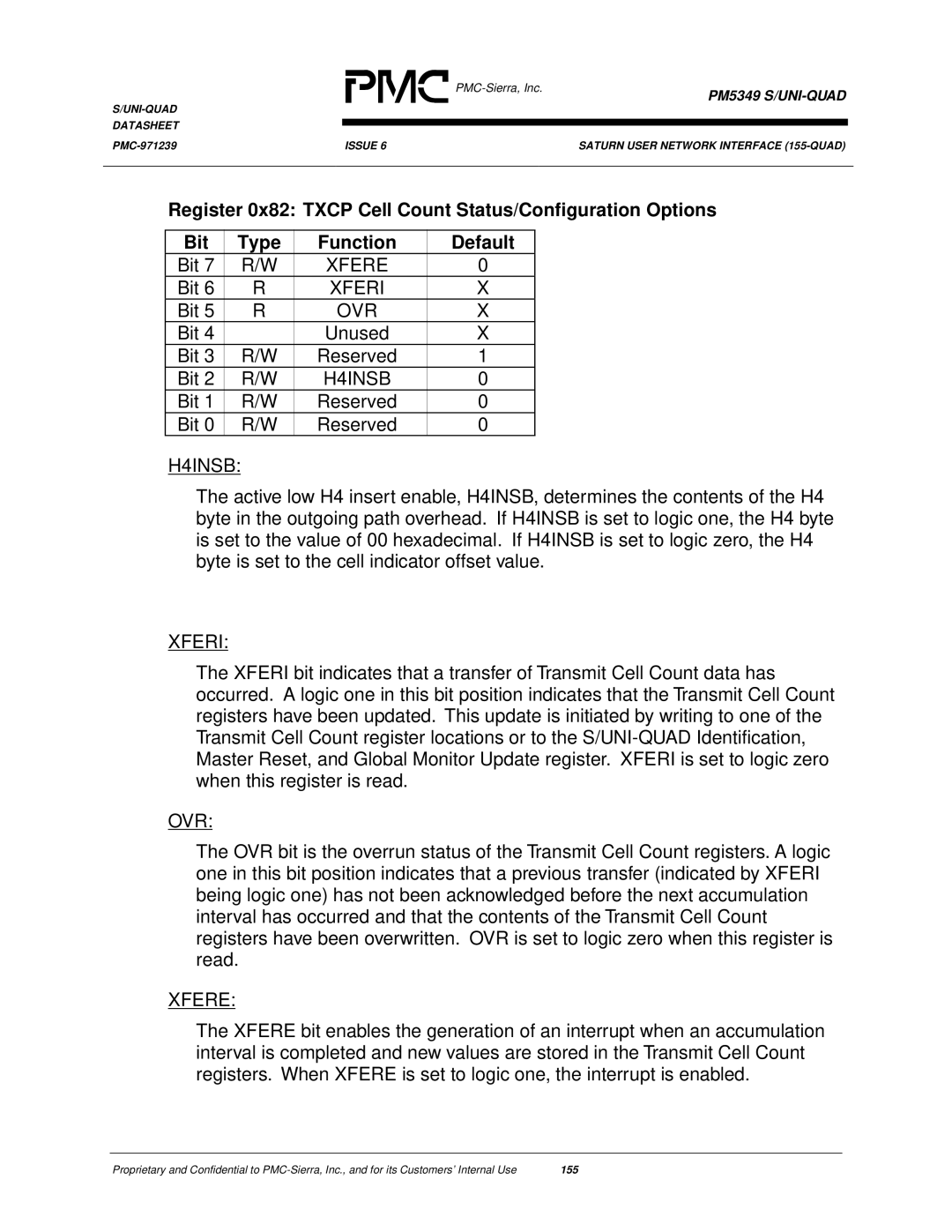
|
| PM5349 |
| |
|
|
| ||
|
|
|
| |
DATASHEET |
|
|
|
|
|
|
|
| |
|
|
|
| |
ISSUE 6 |
| SATURN USER NETWORK INTERFACE |
| |
|
|
|
|
|
Register 0x82: TXCP Cell Count Status/Configuration Options
Bit | Type | Function | Default |
Bit 7 | R/W | XFERE | 0 |
Bit 6 | R | XFERI | X |
Bit 5 | R | OVR | X |
Bit 4 |
| Unused | X |
Bit 3 | R/W | Reserved | 1 |
Bit 2 | R/W | H4INSB | 0 |
Bit 1 | R/W | Reserved | 0 |
Bit 0 | R/W | Reserved | 0 |
H4INSB:
The active low H4 insert enable, H4INSB, determines the contents of the H4 byte in the outgoing path overhead. If H4INSB is set to logic one, the H4 byte is set to the value of 00 hexadecimal. If H4INSB is set to logic zero, the H4 byte is set to the cell indicator offset value.
XFERI:
The XFERI bit indicates that a transfer of Transmit Cell Count data has occurred. A logic one in this bit position indicates that the Transmit Cell Count registers have been updated. This update is initiated by writing to one of the Transmit Cell Count register locations or to the
OVR:
The OVR bit is the overrun status of the Transmit Cell Count registers. A logic one in this bit position indicates that a previous transfer (indicated by XFERI being logic one) has not been acknowledged before the next accumulation interval has occurred and that the contents of the Transmit Cell Count registers have been overwritten. OVR is set to logic zero when this register is read.
XFERE:
The XFERE bit enables the generation of an interrupt when an accumulation interval is completed and new values are stored in the Transmit Cell Count registers. When XFERE is set to logic one, the interrupt is enabled.
Proprietary and Confidential to | 155 |
